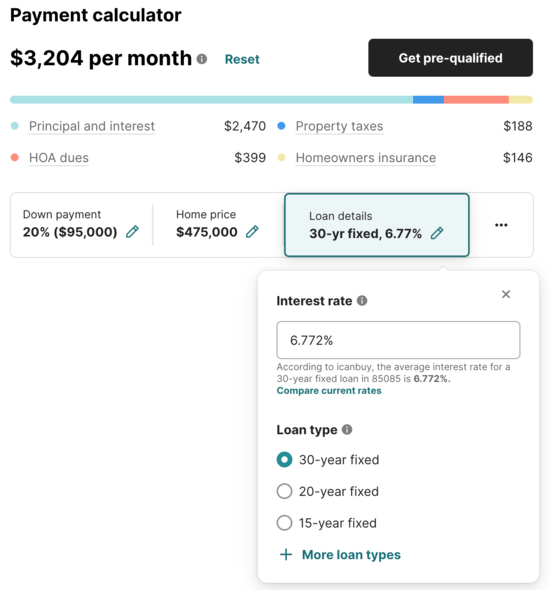Use the High Mortgage Rate When Shopping for a Home on a Budget

As mortgage rates are rising again, somewhat unexpectedly, the thought came to my mind if you are currently shopping for a home.
A few years ago, I dismissed the idea of setting your purchase price down when looking for a property.
That post was driven by many home sales that were going above asking at the time. In other words, a home may be listed for $600,000, but ultimately sell for $700,000 in a bidding war.
All of that had to do with an overheated housing market, driven in large part by a combination of low mortgage rates and very low availability for sale.
Today, we still have relatively low inventory, but cheap mortgage rates have come and gone.
And now that they are so flexible, you may want to enter a higher amount into your loan calculator to make sure you don’t get stuck.
Real Estate Rates Are Very Fluctuating Right Now
Currently, loan rates are unpredictable. Although they enjoyed an excellent 11 months, falling from a high of 8% to around 6% in early September, they have reversed course.
The 30-year fixed has almost returned to the high 5% range before the Fed’s rate cuts and the better-than-expected jobs report.
Sprinkle in some skepticism about the Fed’s pivot and the looming uncertainty about the outcome of the election and home buyers are now facing a rate of almost 1% more.
Per MND, the 30-year fixed rate rose from a low of 6.11% on September 17 to 6.92% as of October 23.
Talk about a tough month for mortgages, especially since many expected the Fed’s rate-cutting campaign to be accompanied by lower mortgage rates.
It’s a good reminder that the Fed doesn’t control mortgage rates, and that it’s best to track mortgage rates with the 10-year bond yield.
Again, those yields are driven by economic data, not what the Fed does. By the way, the Fed makes moves based on economic data as well. So follow the economic data for crying out loud!
Still, this latest spike provides a good reminder that mortgage rates don’t move in a straight line. And unexpected expectations.
Err On The Side Of Caution With High Mortgage Rates
If you’re currently looking to buy a home, it’s usually a good idea to get a pre-qualified or pre-approved.
That way you will know if you qualify for a loan, and what the price is, including the required down payment.
The thing is, these calculations are only as good as the inputs. So if your loan officer or real estate agent puts in very favorable numbers, it may distort the picture of affordability.
In other words, you almost want to ask them to put in a loan amount that is 1% higher than today’s market rates.
That way you can get a higher payout if prices go up during the property search, which can take months and months to complete.
If the prices come down then, great, it will be the icing on the cake. Your expected monthly PITI will be much better than expected.
But like those bidding wars that occur, which lead to higher asking prices, unexpected price increases are to be expected.
And if there are, you may be looking at properties that are within your price range, as opposed to homes that only work if everything is perfect.
Given that homeowners insurance and property taxes are also going up (almost every other expense), it can pay to be smart about your proposed home buying budget.
Adjust the Mortgage Rating on the Property Listing Page

If you use a site like Redfin to browse listings, there is a handy mortgage payment calculator on each listing page.
It provides default rates based on typical down payments, mortgage rates, property taxes, and homeowner’s insurance.
Let’s say the interest rate is 6.77% today, which is reasonable given current market rates.
If you click on the little pencil icon, you can change it to anything you want. You can also choose a different type of loan while you are at it.
Once you’ve done that, it usually saves your input, so if you’re looking at other properties, the rate you initially selected should work for other homes.
This can give you a quick, perhaps more reasonable estimate of the monthly payment, instead of an estimate that may be too good to be true.
So you can put in 7.75%, or maybe 7.50%. That way if rates go up, or you qualify for a higher rate due to some loan rate adjustment, you won’t be caught off guard.
You play it more cautiously when the price goes bad, which is a smart move.
While you’re at it, you may want to review some of the entries to make sure they reflect your proposed loan.
Are you really going to put 20% down on a home purchase, or just 3% to 5%?
Overestimating these expenses instead of underestimating them can help you avoid being house poor. Or worse, you miss out on your dream home entirely because of incorrect measurements.
Source link



